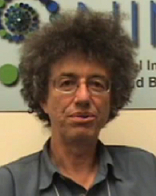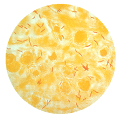 NIMBioS News NIMBioS News
Bi-Monthly News from the National Institute for Mathematical and Biological Synthesis
November/December 2009 - Vol 1, Issue 4
|
|
|
|
|
|
Request For New Activities
|

|
Technical Focus: Optimal Control
|

The focus in December has been optimal control. A NIMBioS Investigative Workshop to discuss developing optimal control of agent-based models was held Dec. 1-3. Powerful computer-simulation modeling techniques, agent-based models are used increasingly to understand a broad range of
biological phenomena, such as tumor growth, the immune system, and the
spread of infectious diseases through a population.
A three-day tutorial, Optimal Control and Optimization for Biologists, Dec. 15-17, will include lectures and interactive computer lab sessions and is being led by Suzanne Lenhart, University of Tennessee Professor of Mathematics, and Michael Bevers of the U.S. Department of Agriculture's Forest Service. |
|
|
|
Video Feature: An Interview with Alan Hastings
|
 University of
California-Davis Distinguished Professor Alan Hastings explains how mathematics has enabled
scientists to understand new aspects of biology, such as what makes an
epidemic go away. Other NIMBioS videos include the BioSongs Project, Modeling the Bear Population, Biology by Numbers, and interviews with the following scientists: Karen Garrett, Sebastian Schreiber, Gail Wolkowicz, Joan Roughgarden and Peter Daszak. University of
California-Davis Distinguished Professor Alan Hastings explains how mathematics has enabled
scientists to understand new aspects of biology, such as what makes an
epidemic go away. Other NIMBioS videos include the BioSongs Project, Modeling the Bear Population, Biology by Numbers, and interviews with the following scientists: Karen Garrett, Sebastian Schreiber, Gail Wolkowicz, Joan Roughgarden and Peter Daszak.
|
Research Highlights
|
 FANNING THE FLAMES
FANNING THE FLAMES
Fire is often thought of as something that trees should be protected
from, but a new study suggests that some trees may themselves
contribute to the likelihood of wildfires in order to promote their own
abundance at the expense of their competitors. The study, which appears in the December 2009 issue of The American Naturalist, says that positive feedback loops between fire and savanna trees can make fires more likely in these ecosystems.
|
 CONTROLLING INFECTIOUS DISEASE CONTROLLING INFECTIOUS DISEASE
Although largely eradicated in the United States, the scourge of
bovine tuberculosis continues to devastate cattle herds and other
animals in parts of the developing world. The disease is also still a
threat to public health where it can be transmitted via contact with
infected animals and by consuming unpasteurized milk.
NIMBioS Post-doctoral fellow Folashade Agusto
knows firsthand of the devastation in her home country of Nigeria,
where few control measures are in place to help eradicate bovine
tuberculosis (TB).
|

HOW CAN WE BE FRIENDS? Animals cooperate in a myriad different ways
in order to increase their, and their species, chances of survival. How do animals cooperate successfully in the face of the
tension between their common or group interests and their conflicting
private or individual interests?
That is one question postdoctoral fellow Erol Akçay
is pursuing as a part of his research at NIMBioS. Akçay is a theoretical biologist who uses
evolutionary game theory to model the dynamics of cooperation and
conflict in animal social behavior.
|
|
The National Institute for Mathematical and Biological Synthesis (NIMBioS) brings together researchers from around the world to collaborate across disciplinary boundaries to investigate solutions to basic and applied problems in the life sciences. NIMBioS is funded by the National Science Foundation in collaboration with the U.S. Department of Homeland Security and the U.S. Department of Agriculture, with additional support from The University of Tennessee, Knoxville.
____________________________________________________
NIMBioS is located on the Univ. of Tennessee, Knoxville, campus - 1534 White Avenue, Knoxville, TN 37996-1527
|
|
|
|
|